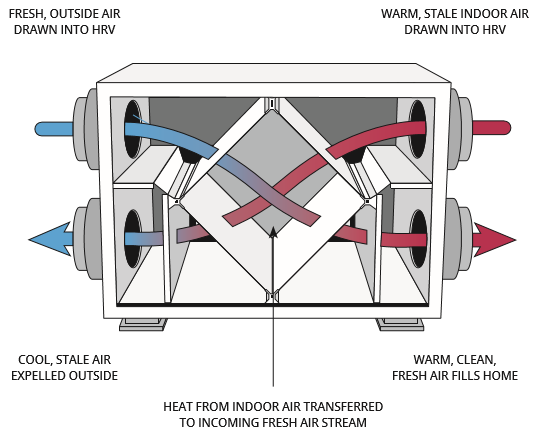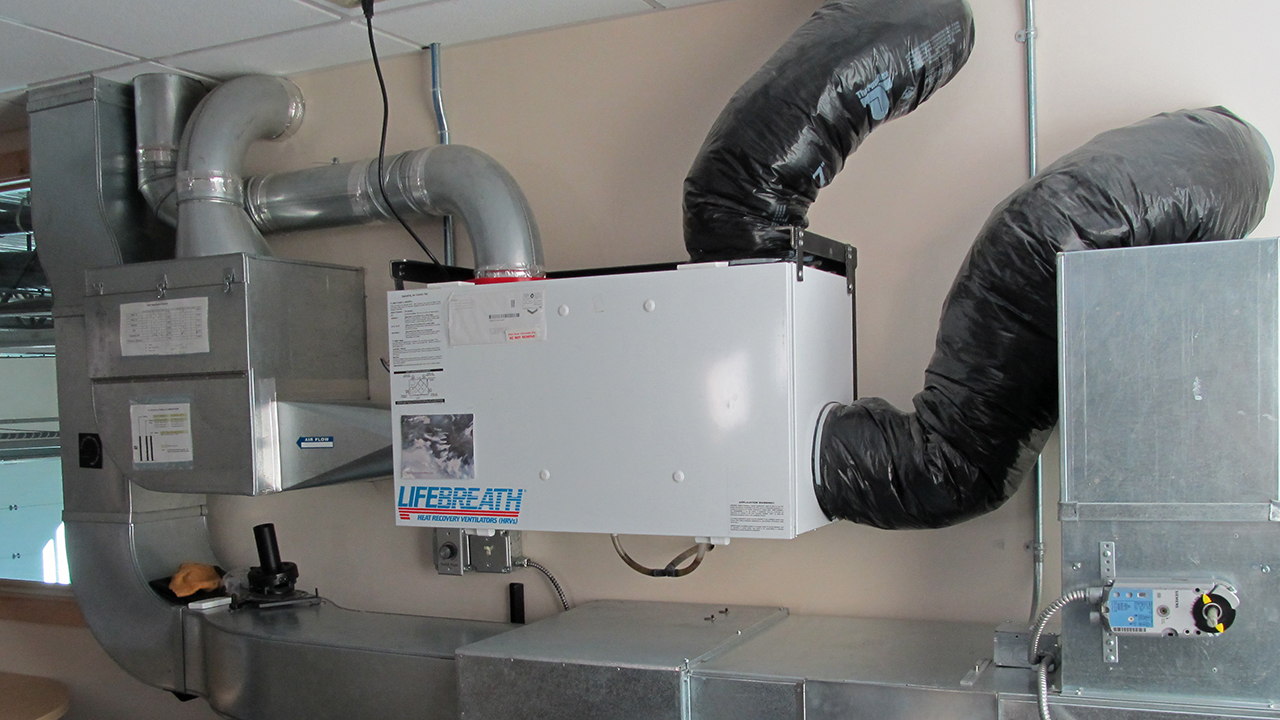How to Select the Right HRV Model for Your House
Wiki Article
Exploring the Conveniences of Heat Recovery Ventilation for Power Efficiency in Houses
Heat Recovery Ventilation (HRV) systems supply property owners a functional technique to enhancing energy effectiveness. By recovering warm from outward bound air, these systems can considerably reduce heating & cooling prices. Additionally, they supply a steady supply of fresh air, enhancing indoor air quality and comfort degrees. As home owners consider lasting alternatives, comprehending the subtleties of HRV systems becomes significantly important. What aspects should one review prior to making such an investment?Recognizing Heat Recovery Ventilation Systems

How HRV Boosts Indoor Air Quality

Energy Cost Savings: The Monetary Benefits of HRV
Making best use of energy effectiveness, heat recovery ventilation (HRV) systems use significant monetary advantages for house owners. By recovering and recycling heat from exhaust air, HRVs considerably minimize cooling and heating expenses. This innovation can lead to power cost savings of as much as 30%, depending upon environment and use patterns. House owners usually discover lowered utility bills shortly after installment, making HRVs a monetarily smart investment gradually. Furthermore, several areas provide incentives or rebates for energy-efficient upgrades, better enhancing the financial charm. As power rates continue to increase, the cost-effectiveness of HRVs becomes significantly clear. Generally, the consolidation of HRV systems not just promotes power performance but likewise adds to lasting financial cost savings for homes.The Ecological Effect of Heat Recovery Ventilation
A significant environmental benefit of heat recovery ventilation (HRV) systems hinges on their ability to decrease total energy consumption. visit our website By recovering heat from exhaust air and moving it to inbound fresh air, HRV systems decrease the demand for energy-intensive home heating and cooling down approaches. This decrease in energy demand adds to lower greenhouse gas exhausts, as much less fossil fuel is required to keep comfy Read Full Article indoor temperature levels. In addition, HRV systems boost interior air top quality by efficiently trading stale air with fresh outdoor air, decreasing reliance on mechanical cooling systems that can hurt the setting. Generally, the application of HRV systems sustains sustainable living practices and lines up with international efforts to battle climate adjustment by promoting power effectiveness in household settings.
Picking the Right HRV System for Your Home
Exactly how can property owners ensure they select the best heat recovery ventilation (HRV) system for their requirements? They need to analyze their home's dimension and design, as these aspects affect air flow requirements. Next off, reviewing the system's performance rankings is essential, as greater scores suggest much better performance and power cost savings. House owners must also consider installation and upkeep expenses, comparing different brand names and designs for value. Additionally, it is necessary to assess sound levels, as some systems operate even more quietly than others. Consulting with a/c professionals can supply customized suggestions based upon particular home conditions. Analyzing user evaluations and guarantees can help in making an informed decision, guaranteeing that the picked HRV system properly improves indoor air high quality and energy performance.Regularly Asked Inquiries

Just how Commonly Should I Tidy or Preserve My HRV System?
The frequency of cleaning or keeping a warmth recuperation air flow (HRV) system usually depends upon use and environmental aspects. Generally, it is advisable to do maintenance every six months to assure peak efficiency and air quality.
Can HRV Solutions Help In Reducing Moisture Levels Inside?
HRV systems can successfully decrease indoor humidity degrees by exchanging stale, damp air with fresh, drier air from outdoors. HRV Heat Recovery Ventilation. This procedure aids maintain a well balanced indoor environment, enhancing convenience and protecting against moisture-related problems
What Is the Life-span of a Normal HRV System?
The life-span of a common heat recovery ventilation (HRV) system differs, normally lasting in between 10 to 15 years. Normal maintenance can prolong its effectiveness and functional life, ensuring peak efficiency throughout its use period.Exist Any Type Of Sound Worry About HRV Equipments?
Sound interest in HRV systems can arise, particularly Read Full Report from follower operation. Nonetheless, several modern devices are created to minimize audio degrees, guaranteeing they run quietly while keeping performance, which attends to potential disturbances in living settings.Can I Set Up an HRV System Myself, or Do I Required an Expert?
The private contemplated whether to mount the heat recovery ventilation (HRV) system directly or hire a professional. Typically, while do it yourself installment is feasible, expertise warranties correct functionality and conformity with regional building codes, enhancing system performance.Report this wiki page